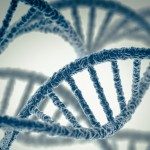Biological innovation involves tinkering existing genes and structures to produce novel functions. How this occurs in terms of molecular evolution at long evolutionary scales remains poorly understood. We analyzed the natural history of a vast group of membrane-associated molecular systems – the type IV filament super-family (TFF) – that diversified in systems involved in flagellar or twitching motility, adhesion, protein secretion, and DNA uptake. These systems are crucial for Bacteria and Archaea to interact with their environment and some are key virulence factors of important pathogens.
We identified over 9000 of these systems across Prokaryotes. Though these systems have been studied in a limited range of taxa, we identified them in all major phyla of the two domains of life, often finding several different systems in the same genome, thereby demonstrating their evolutionary success. We show that the emergence of novel systems was accompanied by changes in terms of gene organization, which are intimately associated with the rates of horizontal gene transfer of the system. We propose that the interplay between genetic organization and horizontal transfer contributed to the rapid evolution and spread of certain systems.
Our results suggests TFFs were present in the last universal common ancestor, where it may have been involved in motility, adhesion or even DNA exchanges. It later diversified in a multitude of functions by a complex set of changes including gene duplication, transfer, fusion, fission, and acquisition that led to extant systems. Surprisingly, our analysis shows that an entire bacterial system – the Tad pilus – was acquired from a system initially evolving in Archaea. By revealing how complex machines can evolve by a multitude of evolutionary steps, our work has important implications to understand the evolution of Prokaryotes and their functions.


